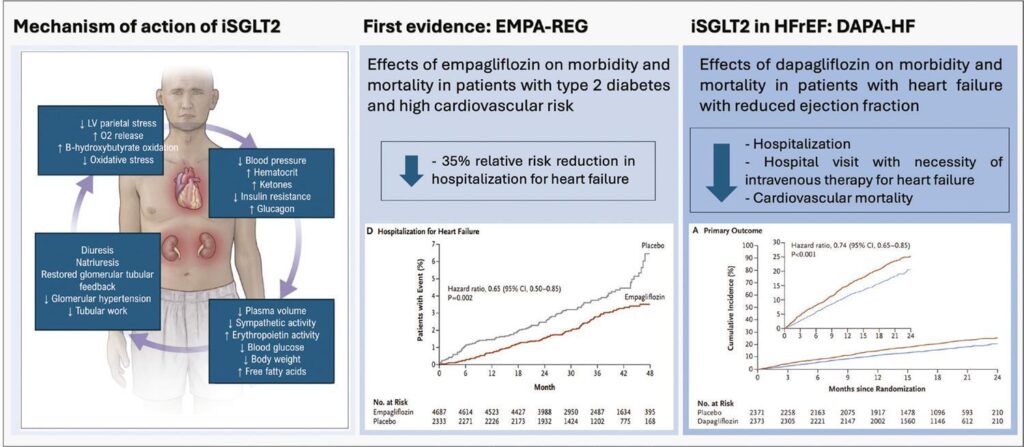ABC Heart Fail Cardiomyop 2024; 4(1): e20240027
The Trajectory of Gliflozins: From Apple Tree Bark to Reduced Overall Mortality in Heart Failure
Abstract
A small number of drugs have been responsible for major advances in medical practice throughout history, for instance, the discovery of penicillin, insulin, aspirin, and statins. Diabetes treatment began with parenteral insulin, discovered by Banting and Bet approximately a century ago; since then, several classes of oral medications that improve glycemic control have been developed and become available for widespread use. More recently, sodium-glucose cotransporter inhibitors have emerged, with a surprising impact and effect on the treatment of patients with diabetes, heart failure, and renal failure, and they are currently considered one of the greatest therapeutic advances in cardiovascular medicine in the twenty-first century. 1 Initially developed only for glycemic control, their effects on cardiovascular protection have been widely demonstrated in large clinical trials in patients with diabetes, showing a significant reduction in the risk of cardiovascular diseases, prevention of hospitalization due to heart failure by 25% to 35%, and reduction of renal outcomes, regardless of the presence or absence of diabetes and the therapies used to treat these conditions.2 In this trajectory of discoveries, gliflozins culminated by demonstrating beneficial effects, including reduced cardiovascular mortality and overall mortality in patients with heart failure, regardless of the presence of diabetes mellitus, in all ranges of left ventricular ejection fraction.
679


